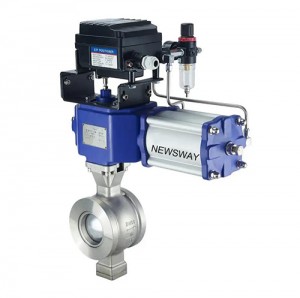
Ball valve materials are varied to adapt to different working conditions and media requirements. The following are some common ball valve materials and their characteristics:
1. Cast iron material
Gray cast iron: suitable for water, steam, air, gas, oil and other media with nominal pressure PN≤1.0MPa and temperature -10℃ ~ 200℃. Commonly used brands are HT200, HT250, HT300, HT350.
Malleable cast iron: suitable for water, steam, air and oil medium with nominal pressure PN≤2.5MPa and temperature -30℃ ~ 300℃. Commonly used brands are KTH300-06, KTH330-08, KTH350-10.
Ductile iron: Suitable for PN≤4.0MPa, temperature -30℃ ~ 350℃ water, steam, air and oil and other media. Commonly used grades are QT400-15, QT450-10, QT500-7. In addition, acid-resistant high-silicon ductile iron is suitable for corrosive media with nominal pressure PN≤0.25MPa and temperature below 120℃.
2. Stainless steel
Stainless steel ball valve is mostly used in medium and high pressure pipelines, with stronger temperature resistance, and is widely used in chemical, petrochemical, smelting and other industries. Stainless steel material has good corrosion resistance and high temperature strength, suitable for a variety of corrosive media and high temperature environment.
3. Copper material
Copper alloy: Suitable for PN≤2.5MPa water, sea water, oxygen, air, oil and other media, as well as the temperature of -40℃ ~ 250℃ steam medium. Commonly used grades are ZGnSn10Zn2(tin bronze), H62, Hpb59-1(brass), QAZ19-2, QA19-4(aluminum bronze) and so on.
High temperature copper: suitable for steam and petroleum products with nominal pressure PN≤17.0MPa and temperature ≤570℃. Commonly used brands are ZGCr5Mo, 1Cr5Mo, ZG20CrMoV and so on.
4. Carbon steel material
Carbon steel is suitable for water, steam, air, hydrogen, ammonia, nitrogen and petroleum products with nominal pressure PN≤32.0MPa and temperature -30℃ ~ 425℃. Commonly used grades are WC1, WCB, ZG25 and high-quality steel 20, 25, 30 and low alloy structural steel 16Mn.
5. Plastic material
The plastic ball valve is made of plastic for raw materials, which is suitable for the interception of the conveying process with corrosive media. High-performance plastics such as PPS and PEEK are commonly used as ball valve seats to ensure that the system does not become corroded by the chemicals present over time.
6. Ceramic material
Ceramic ball valve is a new type of valve material, with excellent corrosion resistance and wear resistance. The thickness of the valve shell exceeds the requirements of the national standard, and the chemical elements and mechanical properties of the main material meet the requirements of the national standard. At present, it is used in thermal power generation, steel, petroleum, paper making, biological engineering and other industries.
7. Special materials
Low temperature steel: suitable for nominal pressure PN≤6.4MPa, temperature ≥-196℃ ethylene, propylene, liquid natural gas, liquid nitrogen and other media. Commonly used brands are ZG1Cr18Ni9, 0Cr18Ni9, 1Cr18Ni9Ti, ZG0Cr18Ni9 and so on.
Stainless acid-resistant steel: suitable for nitric acid, acetic acid and other media with nominal pressure PN≤6.4MPa and temperature ≤200℃. Common brands are ZG0Cr18Ni9Ti, ZG0Cr18Ni10(nitric acid resistance), ZG0Cr18Ni12Mo2Ti, ZG1Cr18Ni12Mo2Ti(acid and urea resistance) and so on.
In summary, the material selection of the ball valve should be determined according to the specific working conditions and medium requirements to ensure the normal operation and long-term stability of the valve.
Post time: Aug-03-2024






